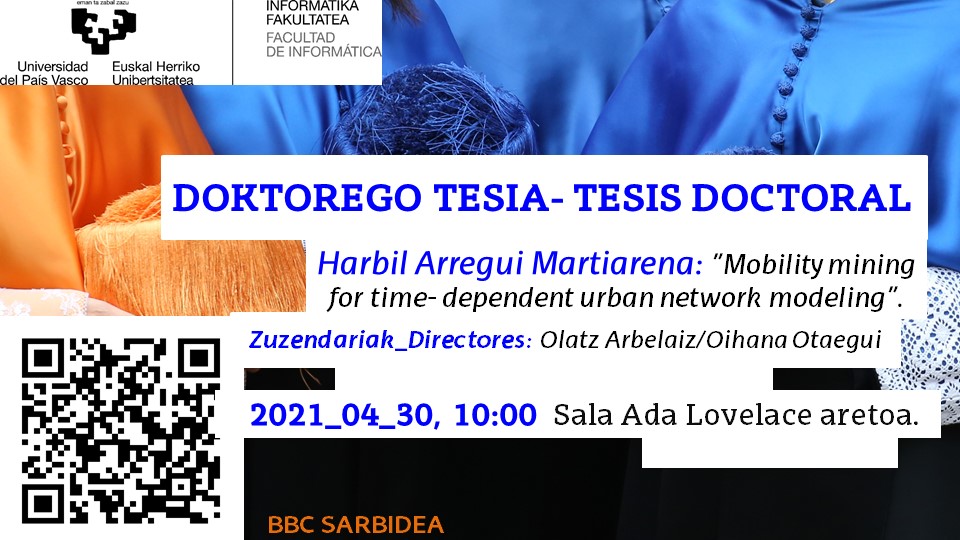2021/04/30 Doctoral Thesis defence Harbil Arregui
First publication date: 26/04/2021

Harbil Arregui Martiarena: ”Mobility mining for time- dependent urban network modeling”.
Zuzendariak_Directores: Olatz Arbelaiz/Oihana Otaegui
2021_04_30, 10:00 Sala Ada Lovelace aretoa.
Abstract:
Mobility planning, monitoring and analysis in such a complex ecosystem as a city are very challenging. Advances in current sensing capabilities and computational intelligence are able to facilitate new seamless decision making solutions for city managers, transport operators and citizens themselves. However, an integrated overview of urban mobility as a whole is still a chimera. Our contributions in this dissertation are expected to be a small step forward towards a more integrated vision of mobility management.
The topics addressed in this dissertation link two main research areas: Ma-chine Learning and Geographic Information Systems for Transportation. The main hypothesis behind this thesis is that the transportation offer and the mobility demand are greatly coupled, and thus, both need to be thoroughly and consistently represented in a digital manner so as to enable good quality data-driven advanced analysis. Data-driven analytics solutions rely on measure-ments. However, sensors do only provide a measure of movements that have already occurred (and associated magnitudes, such as vehicles per hour). For a movement to happen there are two main requirements: i) the demand (the need or interest) and ii) the offer (the feasibility and resources). In addition, for good measurement, the sensor needs to be located at an adequate location and be able to collect data at the right moment. All this information needs to be digitalised accordingly in order to apply advanced data analytic methods and take advantage of good digital transportation resource representation.
Our main contributions, focused on mobility data mining over urban transporta-tion networks, can be summarised in three groups. The first group consists of a comprehensive description of a digital multimodal transport infrastructure representation from global and local perspectives. The second group is oriented towards matching diverse sensor data onto the transportation network repre-sentation, including a quantitative analysis of map-matching algorithms. The final group of contributions covers the prediction of short-term demand based on various measures of urban mobility.


